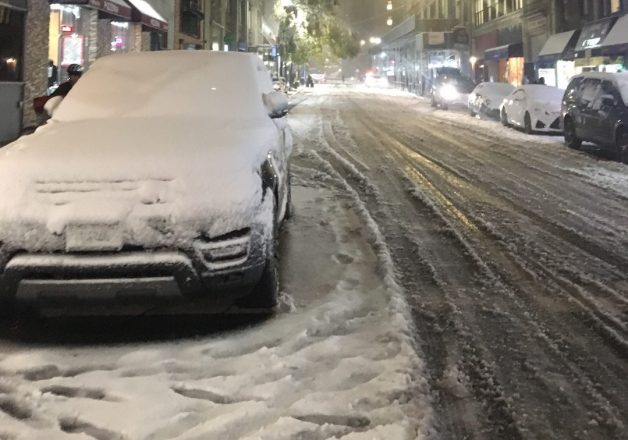Car insurance is a necessity in today’s world. You want to be covered if the unfortunate happens and you get in a car accident. But understanding the details of car insurance policies can be confusing if you aren’t familiar with the typical types of coverage and the policies’ terminology. Here’s what you need to know the next time you go to get a quote.
Types of Car Insurance Coverage
Liability coverage covers your liability if you hurt someone else or damage another person’s property in an accident. It doesn’t cover injury to you, people in your car, or damage to your car.
It’s typically broken down into two parts. First, bodily injury liability is for injuries to others. Second, property damage liability covers damage to property of others. This includes cars, homes, or other property that may be damaged in an accident.
Most states require liability coverage, and it’s commonly quoted in thousand dollar increments like this: “50/100/25.” In this case, the “50” represents $50,000 of coverage per person injured in an accident. The “100” represents $100,000 of coverage in total for injury. And the “25” represents $25,000 of coverage for property damage. The three numbers change depending on the amount of coverage you’re being quoted.
Meanwhile, collision insurance covers damage to your car after a crash. This type of insurance may be required for your car loan.
Comprehensive insurance covers damage to your car for things like theft, vandalism, hail, and hurricanes.
It can also help you if you hit a deer. Your car loan might require this coverage.
Uninsured and underinsured motorist coverage protects you and your property should you get in an accident in which someone else is at fault and they don’t have auto insurance or don’t have enough auto insurance to cover your injuries or damage to your car.
Medical payments coverage helps pay for your, your passengers’, or your family members’ medical expenses related to an accident, depending on the coverage options you choose. It provides coverage whether you or someone else was the person at fault for the accident.
Personal injury protection is available in certain states. Some states may even require it. It typically covers medical expenses and other costs such as lost income or child care expenses. However, coverage can vary depending on the state you live in and options you choose.
Gap insurance is an optional type of coverage that you may want to consider if you owe more on your auto loan than your car is worth. If your car is totaled, this insurance will pay for the difference between what your car is technically worth and what you owe on your loan. It makes sure you won’t end up owing money on a car after it’s been totaled.
Rental reimbursement insurance pays for some or all of the cost of a rental car for you to use when your car is being repaired due to a covered accident.
Towing and labor insurance, sometimes called emergency roadside assistance coverage, helps pay to tow your car, change a flat tire, jump-start a dead battery, or other similar services if your car breaks down.
Other Terminology You Should Know
 In addition to the types of car insurance coverage available, you need to understand a few other things about auto insurance before getting a quote.
In addition to the types of car insurance coverage available, you need to understand a few other things about auto insurance before getting a quote.
First, your premium is the amount you pay for your insurance. Depending on the company and policy you choose, you can typically pay your premium monthly, once every six months, or once a year.
Next, a deductible is the amount of money you’re responsible for when you make a particular type of claim. You can often choose deductibles ranging from as little as $100 to as much as $1,000, and sometimes more. You can usually choose different deductibles for different types of coverage.
Your declarations page is usually sent via email or traditional mail and lists all of the important options you’ve selected for your auto insurance policy. It typically includes your premium, types of coverage, deductibles, cars insured, and other important information you may want to know at a glance.
Finally, a binder is a document that shows you have auto insurance. You can give a binder to a car dealership to prove you have insurance after buying a new or used car with a loan. It’s a temporary proof of insurance until your policy is completely issued and you get your insurance ID cards.
Every State Is Different
Every state has its own laws regarding what types of car insurance coverage you must carry. In addition, each state has its own rules for how much of each type you need to carry.
It’s important to realize that just because a state requires a particular amount of insurance, that doesn’t mean it’s the right amount for you.
You might end up needing more than the minimum.
What Affects Insurance Rates?
Your car insurance rates are determined by more factors than you could imagine. Most importantly, your rates are based on the types and amounts of coverage you select.
Factors directly associated with you also help to determine your rates. These include:
- Gender
- Age
- Marital status
- Occupation
- Past driving history
- Past claims history
- Years of driving experience
- Credit history
- The type of car you drive
- How much you drive
- What you use your car for
- Where you live
- Whether you own your home
- Any other factors your insurance company deems relevant that are legal to consider
Car Insurance Discounts
You may also qualify for car insurance discounts. Common discounts include:
- Paid in full
- Paperless
- Discount for allowing the insurance company to track your driving
- Mileage-based discounts for driving less
- Homeownership
- Policy bundling for having multiple types of insurance with the same company
- Multi-car
- Customer loyalty
- Good driver
- Accident-free
- Car-related safety such as daytime running lights, antilock brakes, etc.
- Affiliation with certain organizations such as colleges or trade groups
- Defensive driver training discount
When you get a quote, make sure to ask the insurance agent if you qualify for any additional discounts. You might qualify for discounts that you didn’t even know existed.
Doing the Calculations
Each car insurance company will use these and other factors along with its proprietary formulas to come up with your auto insurance rate. Each factor may be weighed differently depending on the auto insurance company you’re getting a quote from. As such, it pays to shop around to find the best policy for you.
For example, if you drive less than 30 miles a day or only use your car to commute around town or for weekend getaways, Metromile’s per-mile car insurance might cut your insurance bill by as much as half your current rate.
Choosing the Right Car Insurance Coverage for You
First, you need to make sure you have all of the types of coverage required by law and your auto loan. Next, evaluate your financial situation to see what other types of coverage you need to protect your family and your finances should you get in an accident.
Unfortunately, serious car crashes can result in quite a bit of damage. If you don’t have enough insurance to pay for all of the expenses other people incur as a result of the accident, those people can sue you for the remaining amount owed.
Also take a look at optional auto insurance coverages, such as towing and labor, collision, and comprehensive coverages, to see if they provide a good value for the cost. If you believe that over time the insurance will more than pay for itself or will help you sleep easier at night, it may be worth purchasing it.
However, if you’re financially independent and replacing a car that gets totaled in an accident wouldn’t cause any financial stress, you may want to save money by skipping coverages you don’t expect to use. Ultimately, the types of car insurance coverage you choose are up to you.




